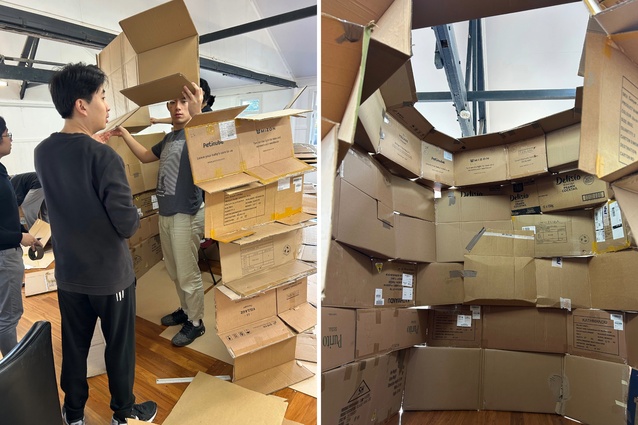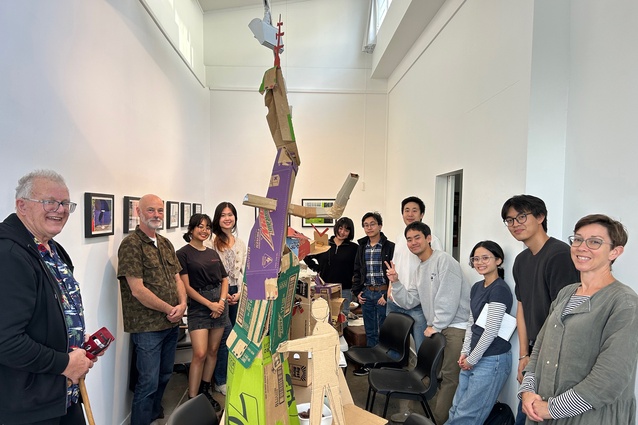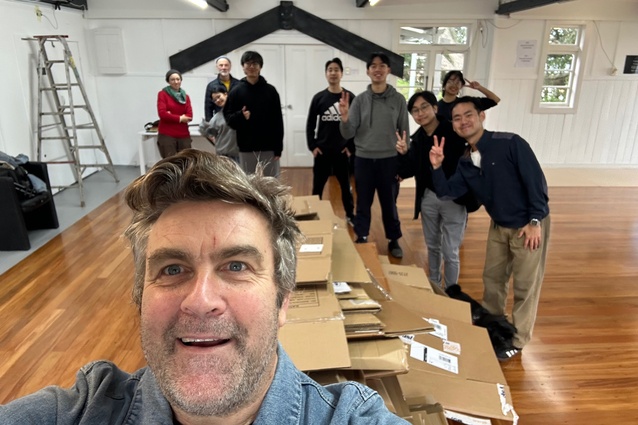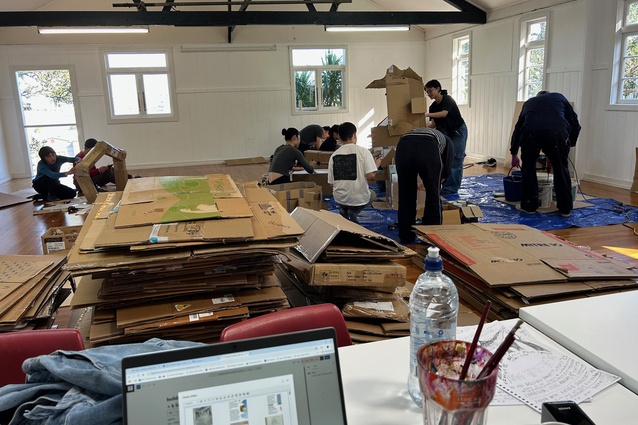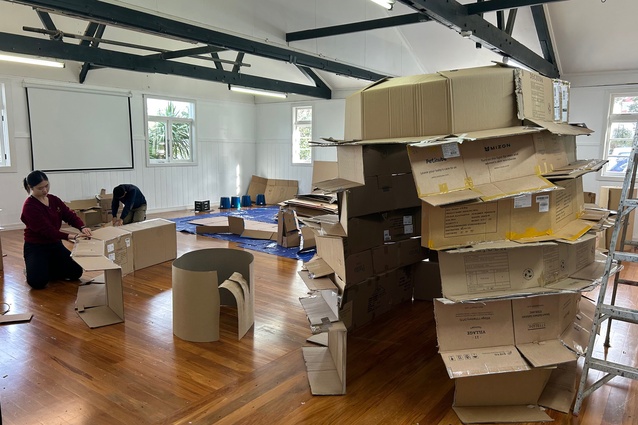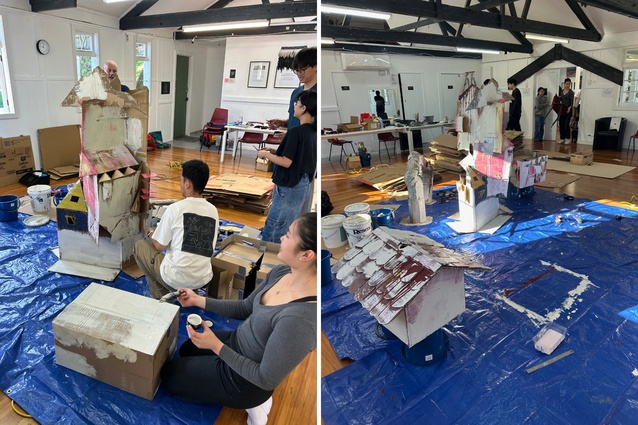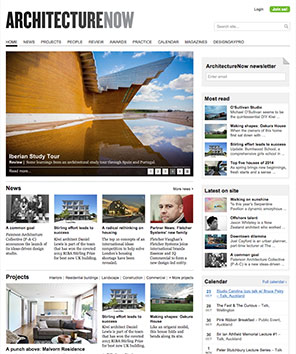Experimenting with building (Under the Volcano)
Building (Under the Volcano) is an exploration of suburban built environments and attitudes towards home ownership. Led by artist Richard Reddaway, designer and architectural historian Kate Linzey and architect/artist/academic Matt Liggins, with a crew of architecture students from the University of Auckland’s Architecture School, it involves the collaborative construction of architectonic sculptures.
“The students are working for a week in residence at Depot’s Te Whare Toi, the Kerr Street artspace, a mid-century community hall with a long history of supporting creative experimentation and skills development,” says Liggins. “They are building structures imagining forms/structures in response to the Devonport Te Hau Kapua environment, using recycled cardboard (through support from Resource Recovery Devonport) and recycled paint — sourced from Te Hau Kapua’s garden sheds and garages through community donations.”
The structures evolved through a drawing/making workshop during the Easter break, see link to photos here.
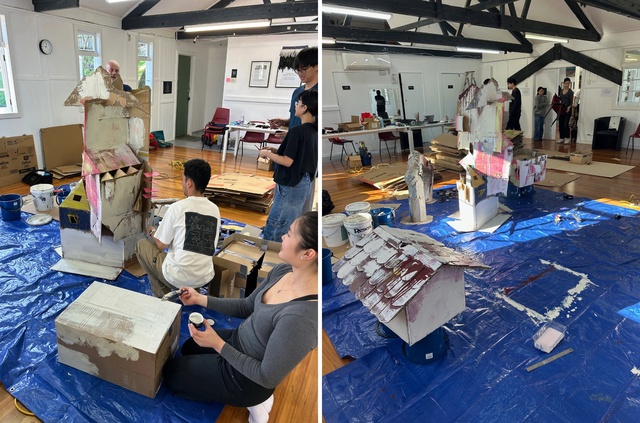
“The water-based paints sourced from the neighbourhood will form a partial index of recent (and not-so-recent) choices about what colours folk have painted their houses, fences and sheds,” explains Reddaway. “What colours will be offered up — will there be an extensive range of beige, oatmeal, off-white and pale grey, or will more vibrant colours be in the mix? Will they reveal how we think about houses as spaces for creative expression, or will the donated spectrum be dominated by pressures to decorate for potential future buyers?”
Linzey says the exhibition draws from the genealogy of forms that constitute Te Hau Kapua Devonport, “from the traces of pā in the landscape and remnants of early colonial farming settlement, the predominant Victorian tract housing of the early 20thcentury, experiments with Modernism in the post-war era and proliferation of Navy housing. Since the 1980s, land prices have skyrocketed, dilapidated Victorian villas have been renovated and in-filled with Post-then Neo-Modernist dreams.”
The project considers a plurality of relationships to land, to whenua and how we choose to create our homes, explains Liggins. “How might this exploration connect into the sensual and remembered histories of place, the green grass of Mt. Victoria and toys on the beach? How do different cultural understandings and expressions of home shape our suburban environment? Is there, as Jade Kake asks, ‘[a]n inherent tension within Pākehā attitudes towards landscape […] between appreciation on one hand, and entitlement to resource extraction and modification on the other.’1
Building workshops at Te Whare Toi are taking place from Monday 7 to Friday 11 July, with the space open to the public the week following, 14–19 July, and public programme events will be held in two locations on Saturday 19 July (in collaboration with Future Devonport’s Ken Davis, Julie Stout and architecture students from University of Auckland and speaker panel TBC) at the Devonport RSA.
Dates
Build: Monday 7 July until Friday 11 July, 10am–4pm each day
The public is welcome to watch the students as they build
Exhibition opens to public: Monday 14 July - Saturday 19 July, 10am–4pm each day
Forum with Future Devonport (Julie Stout and Ken Davis and AD1 students): Saturday 19 July, 4.30pm–6.30pm, RSA Devonport
Reference
1 Pantograph Punch, Beyond the Mamae: A Review of Five Pākehā Painters

